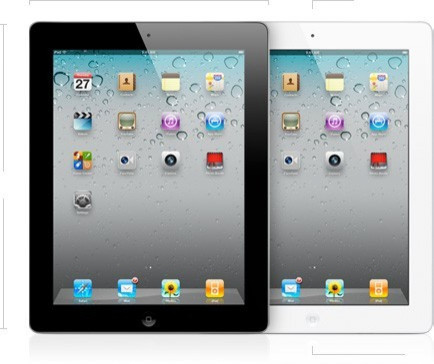iPad 2 Seen To Cause Bubble Burst in Tablet Market

The launch of Apple's (NASDAQ: AAPL) iPad 2 is pointing to an increasing risk of bubble burst in the tablet market in the second half of 2011, according to an analyst at JPMorgan.
The iPad 2 will ship in two colors (black and white) starting March 11 in the U.S. with Wi-Fi only configurations and models that run on AT&T (NYSE: T) and Verizon's (NYSE: VZ) 3G networks.
The iPad 2 is expected to be available online starting at 3 am ET with devices sold in stores starting at 5 pm the same day. iPad 2 will be available in 26 additional countries on March 25 with more international launches in the coming months.
In our view, the technical and form factor improvements of the iPad 2 stand to make it tougher for the first generation of competitive offerings to play catch-up, meaning actual shipments could fall well short of plan, analyst Mark Moskowitz wrote in a note to clients.
JPMorgan's research indicates that Apple and other tablet makers/hopefuls plan, in the aggregate, to build 81.0 million tablets in 2011. In contrast, 2011 tablet unit shipments estimate is 47.9 million.
The brokerage adopted a Worst-Base-Best case scenario. Base represents current J.P. Morgan estimate of global tablet shipments. Worst applies 10 percent discount to Base case shipments. Best applies 20 percent premium to Base case shipments.
Moskowitz said his 2011 base case implies that supply could outpace demand for tablets by 17.2 million units, or 35.9 percent, which is not good.
Who Gets Hurt The Most From A Tablet Bubble?
The analyst said the bubble risk is higher for the component suppliers than for the tablet makers. Based on his research inputs, tablet makers eager to emulate Apple's meteoric start are trying to secure components with inflated build plans.
There appears to be a concern among makers that certain components will not be available if tablets take off.
Of note, glass displays, processors, and, to a lesser extent, NAND Flash are the components that could be most at risk, Moskowitz wrote.
In addition, the analyst do not think a combination of limited differentiation and unattractive pricing from the iPad wannabes will attract enough incremental purchasers to get within earshot the global build plans.
Additionally, like it or not, Apple is not for everyone. We have a favorable view of Apple's products and operating model, but given the extraordinary success of the company over the last decade, there are holdouts, just as there were with Microsoft before Linux, Moskowitz said.
The analyst thinks that these holdouts will be underwhelmed by the iPad 2 alternatives. Aside from Motorola's Xoom and HP's TouchPad (which does not have a price tag yet), the competitive offerings appear to be light on attraction.
Meanwhile, Barclays analyst Ben Reitzes still expects that competitors will find it tougher to compete with Apple in tablets than in phones given the integration of iTunes and Apple's expertise in design and battery life.
Analyst Reitzes noted that it seems that non-Apple tablets are still unproven and he believes the consensus non-Apple tablet figures are at a much greater risk of downward revisions -- while Apple still has an upside bias.
Sanity Check: iPad vs. The Rest
JPMorgan's forecast calls for 47.9 million tablets shipped worldwide in 2011, with Apple shipping 29.1 million iPads, or taking 61 percent of the total tablet shipments. As a result, about 18.8 million tablets is available for the remaining tablet makers, or about 39 percent of the brokerage's estimated available market.
Barclays analyst Reitzes believes the supply chain is readying for about 40 million units this year, with production ramping up later in second quarter of 2011 through year-end with the iPad 2 serving as a potential catalyst.
With regard to non-Apple tablets globally, there seems to be consensus around a 20 million figure for 2011, which suggests a more conservative stance than some of the bullish predictions of a few months ago (with some potential for downside), Reitzes said in a note to clients.
The market share delta between tablet build plans and potential worldwide tablet shipments provides a reasonable sanity check that a tablet overbuild scenario is a possible event for the non-Apple tablet market participants, in our view, analyst Moskowitz said.
© Copyright IBTimes 2024. All rights reserved.





















